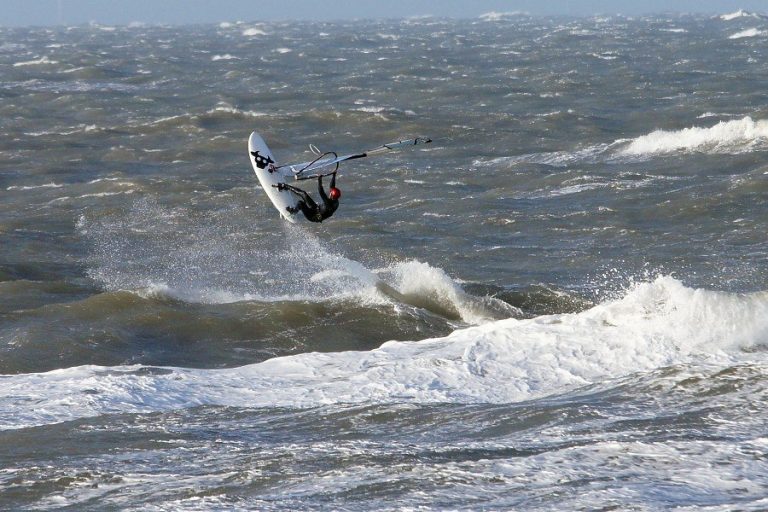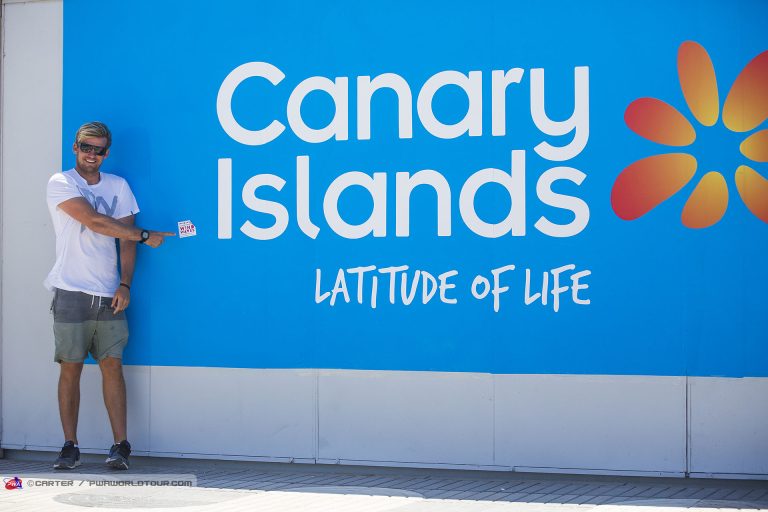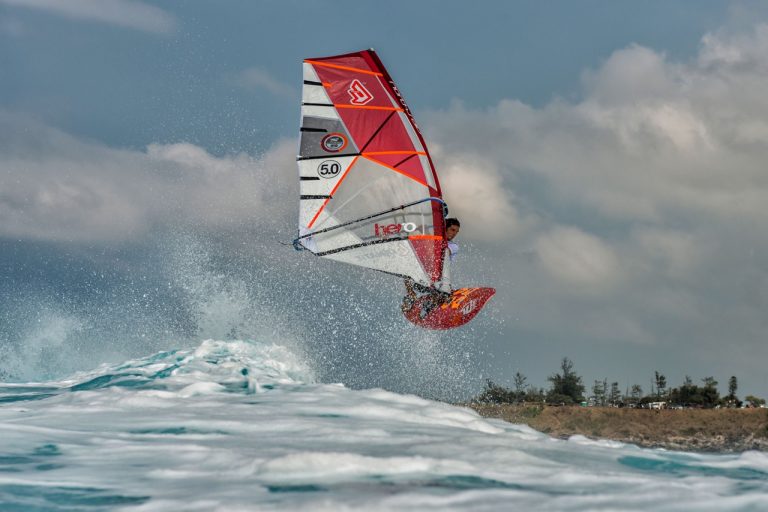The RYA join us on BOARDS this month to give us some insight into the different types of windsurfer and how you can get involved in the discipline of your choice. We here from top UK windsurfers such as Adam Lewis
“When we go into primary schools to present windsurfing, the kids are typically silent and well-mannered, but then we stick the video on and they go absolutely mental!” Tris Best Iaughs as he discusses the impact showing youngsters 15ft jumps and loops in briny seas has on their enthusiasm for trying windsurfing.
“They really haven’t anticipated how extreme the sport can be, and get blown away. The last assembly we did in the autumn saw 28 kids sign up straight away.”
Wait for the well-worn cliché, but once you can windsurf the sport really does become a playground.

Freeriding, bump and jump, slalom, freestyle, wave, racing, Formula, all just words when a rookie takes their first tentative steps on a board. But each can become a way of life in their own right once that windsurfer masters the core skills.
Gone are the days when windsurfing equalled one type of board with one type of sail; variety is very much the spice of a windsurfer’s life thanks to constant development in boards, sails, kit and travel opening up new locations to explore.
Everything is possible, yet nothing is possible without a good grounding in the sport.
As Amanda Van Santen, RYA Chief Instructor, Dinghy and Windsurfing, explains: “I first learned to windsurf at Outdoor Adventure in Cornwall, which ran RYA courses. I’d sailed with my school on activity weeks in the UK and overseas, and as a child loved any sports that were outside”.
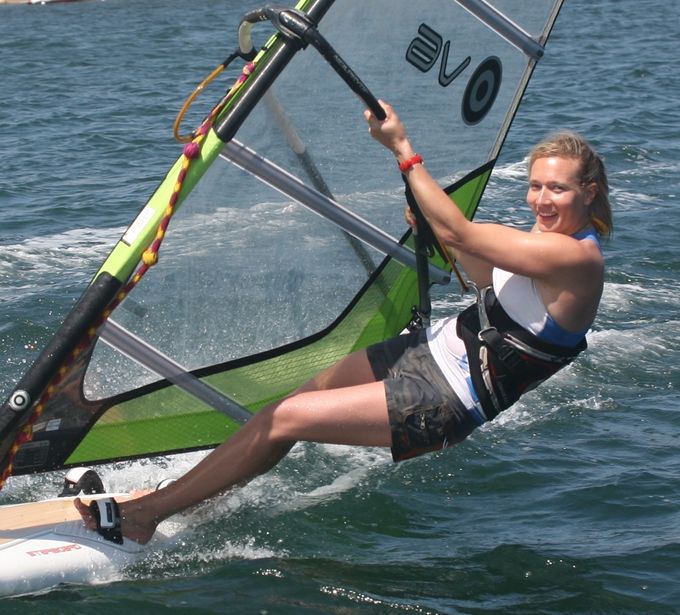
“At 19 I joined their Instructor Training programme and got qualifications for windsurfing, dinghy, surfing and kayaking. The tuition I gained through my RYA courses and instructor training definitely laid foundations to my windsurfing.”
“Gaining good solid tuition ensures you understand why and how things happen, rather than stumbling through skills. One of the most important lessons I remember was learning to carve gybe. It taught me so many other skills and increased my understanding of board control and handling.”
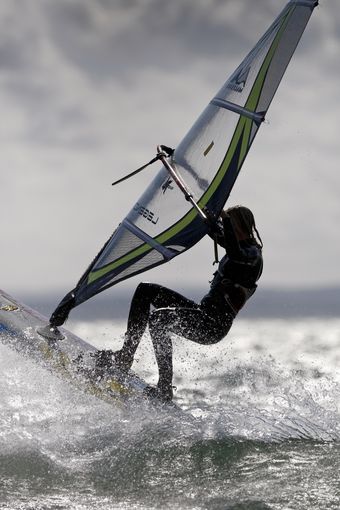 Amanda’s story is typical, and while for her there is still nothing better than a bit of bump and jump and “a good day’s blasting”, for others the competitive buzz of racing or the adrenaline rush of pulling off a new trick in the waves is the pull. Yet the core skills, from tacking, wind sense, planing, water starts, carve gybes, using footstraps and harnesses and front loops, for example, remain the constant.
Amanda’s story is typical, and while for her there is still nothing better than a bit of bump and jump and “a good day’s blasting”, for others the competitive buzz of racing or the adrenaline rush of pulling off a new trick in the waves is the pull. Yet the core skills, from tacking, wind sense, planing, water starts, carve gybes, using footstraps and harnesses and front loops, for example, remain the constant.
Adam Lewis is now one of the UK’s finest wave sailors realizing his dream on the PWA World Tour, but he admits his grounding from RYA Team15 at Axbridge and Durleigh, in Somerset, built his passion.
“I loved T15 and the social side of it. Although I did race and got into RYA South West Zone Squad, I didn’t have the mentality for racing. But when it was windy, and touch and go if a safety boat could launch, I was there!”
“The brilliant thing about T15 was we got a good all round mix of everything. One day we’d do light wind freestyle stuff, spinning around, doing jumps, the next we’d race. With guys like Bob Shillito coaching us, and a tightknit group, we stayed at it.”
“All the very good sailors are really well-rounded, which isn’t a coincidence. Skills I learned racing I still use now. The tactical mindset of waiting for a wave out to sea is like waiting behind a start line, and I got really good at sailing under or overpowered because when you’re on 1D kit you’re rarely on the right sail.”
“I was lucky as we had good shortboarders where I sailed, like Mark ‘Sparky’ Hosegood, who was doing the UK freewave training, and that really opened our eyes to what else was out there and we started going further afield to windsurf.”
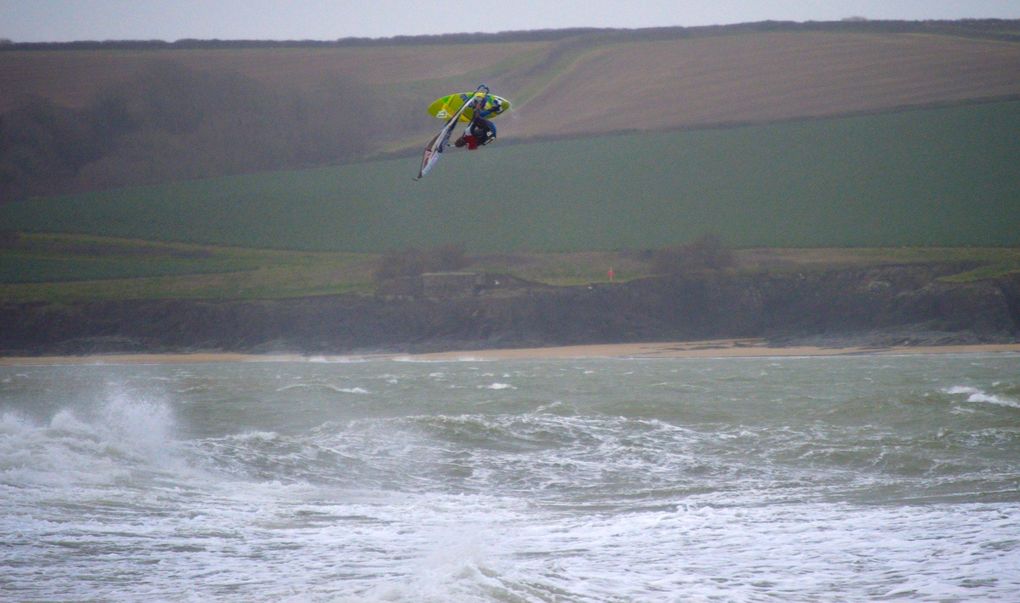
If racing wasn’t the hook for Adam, competition was the main motivator for the British Sailing Team’s Imogen Sills. Growing up the younger sister of Sam and twin of Saskia, Imogen did not at first take to windsurfing in the same way as her siblings. But when Saskia started winning things, Imogen wanted a piece of that cake too.
“A Siblyback Lake Windsurfing Rally was the turning point,” Imogen recalls. “I’d tried windsurfing a few times but hated it, and got dragged around as Sam and Saskia went training and racing! But at the rally I got my own board to use, was taken out one-to-one and started to plane. I really liked that.”

With her RYA Start Windsurfing Stage 1 and 2 certificates under her belt, Imogen joined Saskia and Sam at Roadford Watersports T15, taking part in the South West Regional circuit and being selected for RYA South West Zone Squad. Progression alongside Saskia through the RYA’s National Junior and Youth squads to Podium Potential Squad selection followed in late 2012. Yet T15 paved the way.
Imogen continues: “I loved racing and T15 taught us how to sail a course, upwind, downwind, and how to race against other people. As a 10-year-old it’s hard to understand upwind and downwind, but T15 made it so fun, like being the first to try to reach milk bottles full of sweets to help us understand how to get somewhere.”
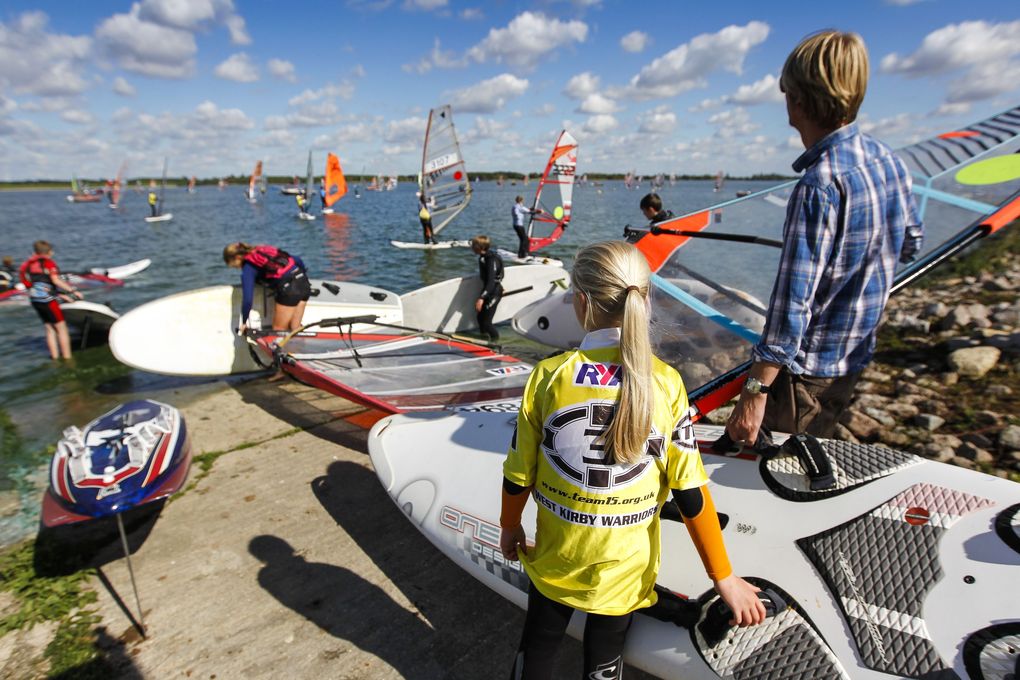
As Director of the Official Test Centre (OTC) at the Weymouth and Portland National Sailing Academy, Tris, a committed wave sailor, uses Dorset’s diverse coastline to showcase what windsurfing can offer, from the flat waters of Portland Harbour, to the bump and jump conditions of Overcombe Bay and wave sailing at Kimmeridge.
He believes being confident in the ‘basics’ breeds a determination to push boundaries.
“We take sailors to different locations to show them the gradual steps they can take, and find they come back to the harbour really motivated to nail their core skills.”
“From there it’s about knowing your limits while stepping outside of your comfort zone to learn and progress. As long as you follow the RYA’s Seven Common Senses around checking conditions and equipment and sailing with others, the integrated manner of putting skills together is the beauty of windsurfing. Even most of the top wave guys came through racing, but once you have the skills you can specialize.”
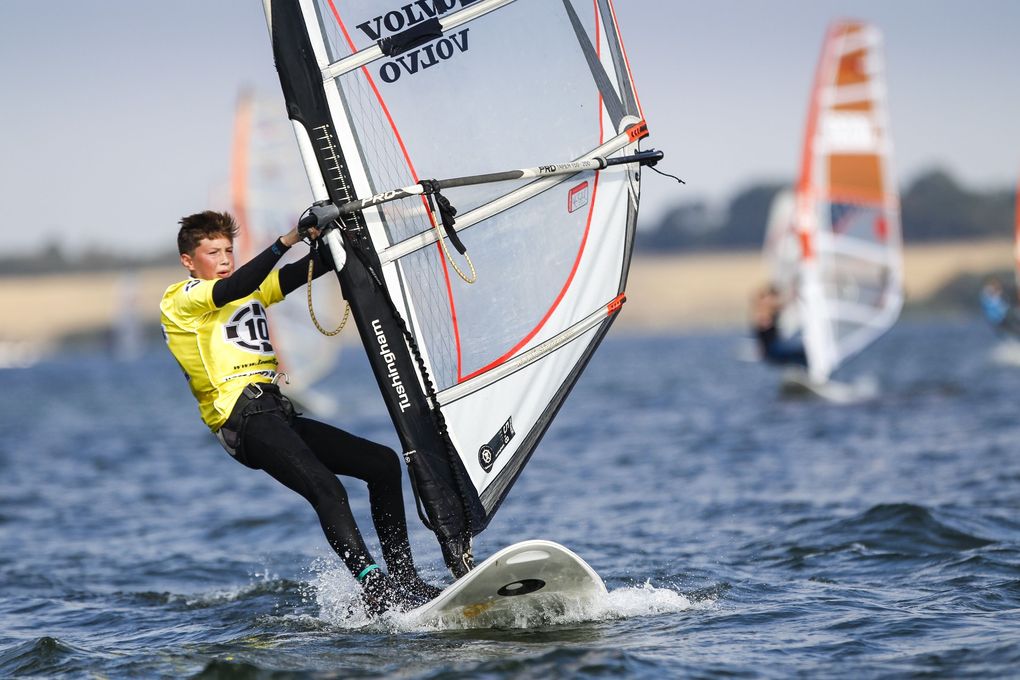
Amanda concludes: “Seek out opportunities and just give it a go! So many centres have a variety of equipment and ‘pay and play’ options, don’t stick with what you know, try different types of boards and sails for different disciplines. There are also many fun events, such as the National Watersports Festival and Weymouth Speed Week, to go to and appreciate the sport in all its forms. It’s a playground out there!”
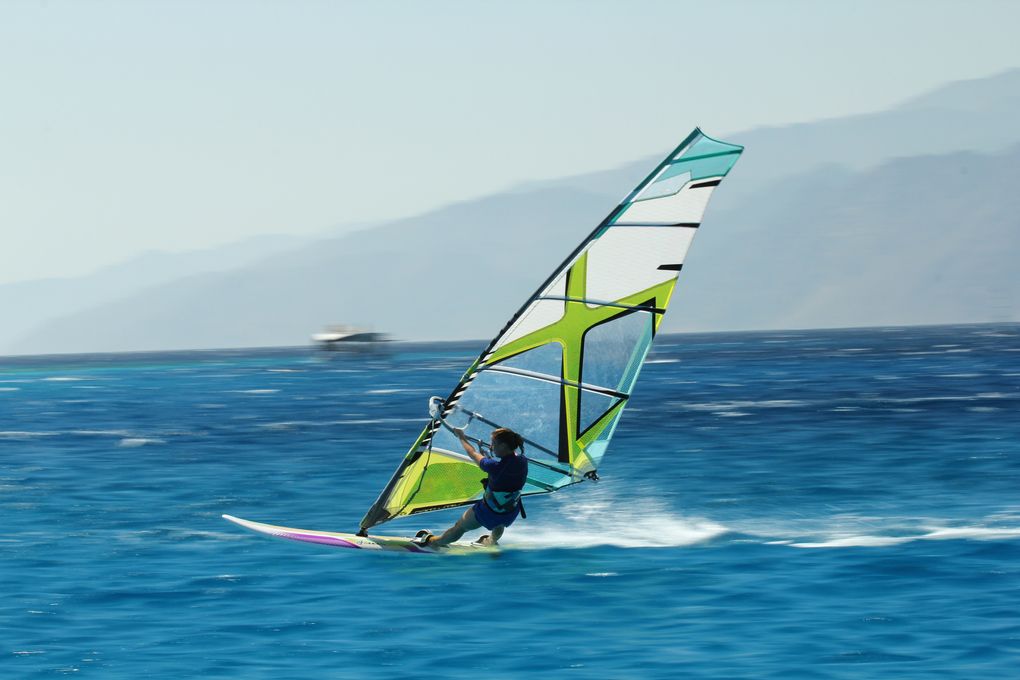
To find out more about getting into windsurfing and windsurfing training courses visit www.rya.org.uk
Love Windsurfing? Then why not join the association that promotes and protects, safe, successful and rewarding British windsurfing. Join today and support the RYA in protecting your rights and freedoms. Take advantage of free advice and support on a wide range of windsurfing topics; enjoy free third party insurance, as well as a fantastic range of personal member offers. Find out more by calling 02380 604 159, email [email protected] or visit www.rya.org.uk

